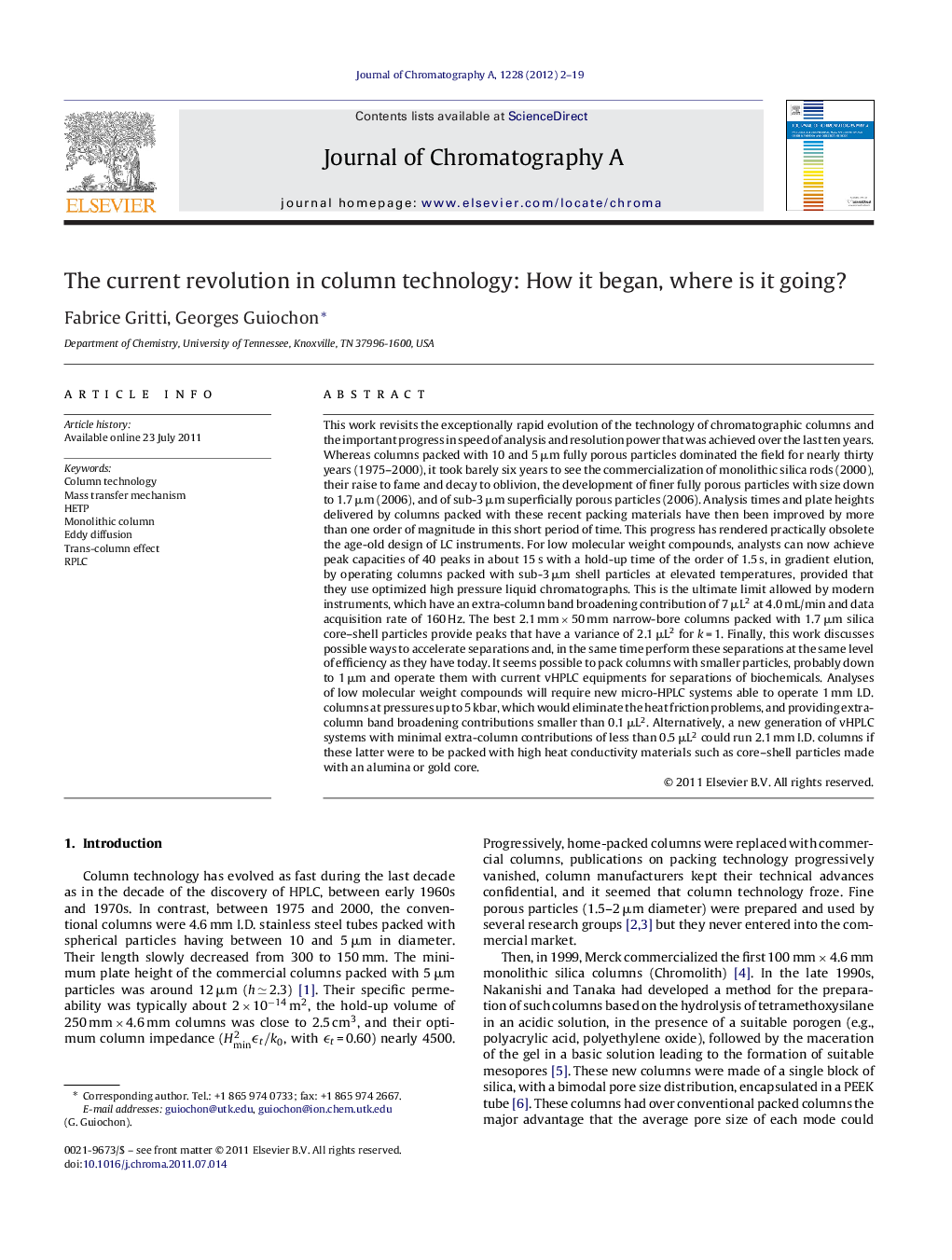| کد مقاله | کد نشریه | سال انتشار | مقاله انگلیسی | نسخه تمام متن |
|---|---|---|---|---|
| 1203130 | 1493697 | 2012 | 18 صفحه PDF | دانلود رایگان |

This work revisits the exceptionally rapid evolution of the technology of chromatographic columns and the important progress in speed of analysis and resolution power that was achieved over the last ten years. Whereas columns packed with 10 and 5 μm fully porous particles dominated the field for nearly thirty years (1975–2000), it took barely six years to see the commercialization of monolithic silica rods (2000), their raise to fame and decay to oblivion, the development of finer fully porous particles with size down to 1.7 μm (2006), and of sub-3 μm superficially porous particles (2006). Analysis times and plate heights delivered by columns packed with these recent packing materials have then been improved by more than one order of magnitude in this short period of time. This progress has rendered practically obsolete the age-old design of LC instruments. For low molecular weight compounds, analysts can now achieve peak capacities of 40 peaks in about 15 s with a hold-up time of the order of 1.5 s, in gradient elution, by operating columns packed with sub-3 μm shell particles at elevated temperatures, provided that they use optimized high pressure liquid chromatographs. This is the ultimate limit allowed by modern instruments, which have an extra-column band broadening contribution of 7 μL2 at 4.0 mL/min and data acquisition rate of 160 Hz. The best 2.1 mm × 50 mm narrow-bore columns packed with 1.7 μm silica core–shell particles provide peaks that have a variance of 2.1 μL2 for k = 1. Finally, this work discusses possible ways to accelerate separations and, in the same time perform these separations at the same level of efficiency as they have today. It seems possible to pack columns with smaller particles, probably down to 1 μm and operate them with current vHPLC equipments for separations of biochemicals. Analyses of low molecular weight compounds will require new micro-HPLC systems able to operate 1 mm I.D. columns at pressures up to 5 kbar, which would eliminate the heat friction problems, and providing extra-column band broadening contributions smaller than 0.1 μL2. Alternatively, a new generation of vHPLC systems with minimal extra-column contributions of less than 0.5 μL2 could run 2.1 mm I.D. columns if these latter were to be packed with high heat conductivity materials such as core–shell particles made with an alumina or gold core.
Journal: Journal of Chromatography A - Volume 1228, 9 March 2012, Pages 2–19